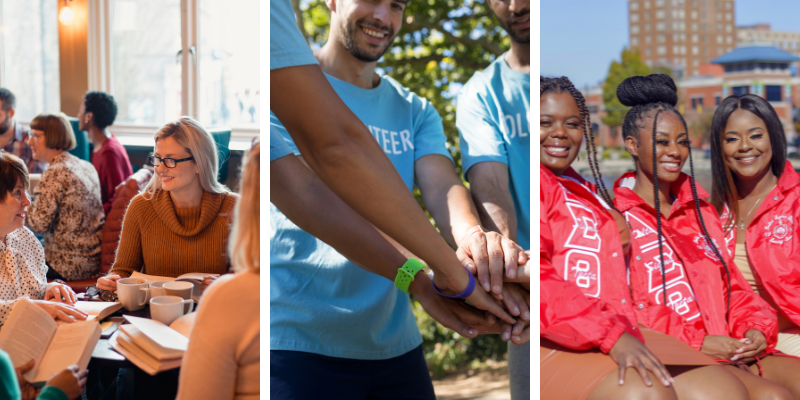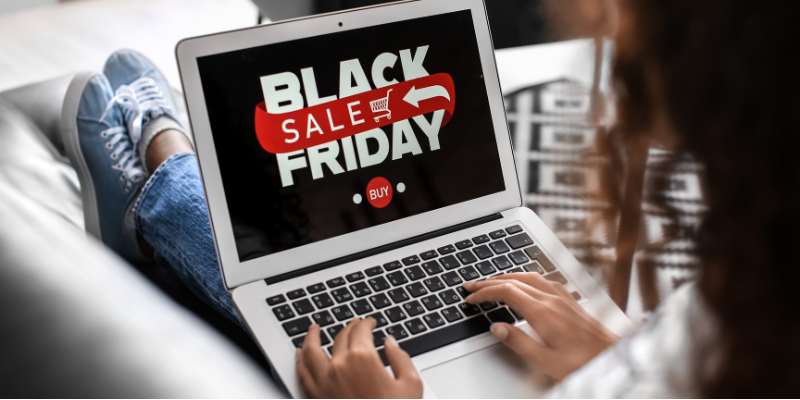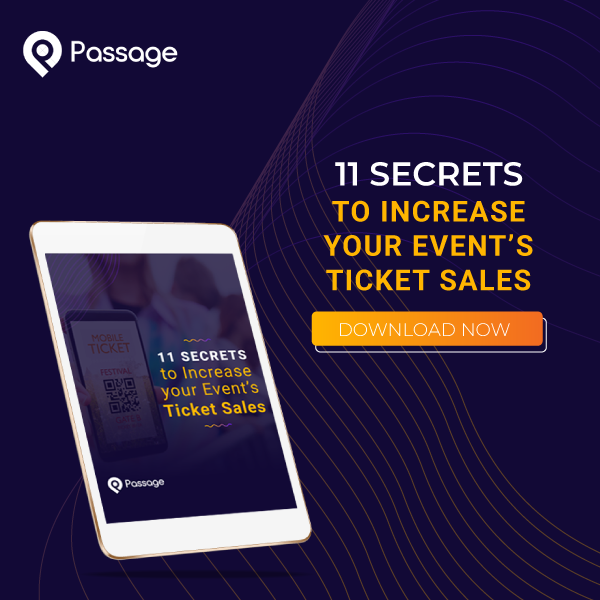There’s a lot going through an event producer’s mind when planning for the big day. It seems like there are countless components to keep track of that determine how attendees will spend their time and money at your event. But one vital area that tends to get glossed over or overlooked completely is ensuring that your event is inclusive to all and promotes diversity throughout.
These are not just buzzwords that are reduced down to boxes to tick on a checklist, but rather deep values that your event can embody. A recent study from Google found that businesses focused on diversity have a 14 percent higher share of revenue from new products. And 71 percent of consumers are more likely to buy a product (such as an event ticket) that aligns with their values. It's not only the right thing to do, it's the profitable thing to do.
There are opportunities at every step of the event planning process to promote diversity and inclusion, but how do you go about making these changes in a way that is authentic and shows compassion? The following tips outline the first steps you can take to diversify your event and make it more welcoming for attendees coming from a variety of different backgrounds.
Before your event:
1. Make your pricing more accessible to help in-need communities
Both class and income are often overlooked when it comes to critical areas of diversity. Including different ticket options beyond your standard general admission price, like tiered ticketing and ”pay what you can” options, are great ways to encourage people, regardless of financial status, to enjoy your event. This grants access to those who may not have been able to attend otherwise, further bringing in people who contribute more diverse ideas and perspectives. Additionally, you can offer discounted tickets to folks who meet a certain criteria. Examples of this can be student pricing, senior discounts, military discounts, or even first-responder discounts. This can be a great way to signal that people who identify with these categories are welcome at this event (e.g. think this event isn't for seniors? Nope, we've even got a senior discount).
When you're ready to start selling tickets to your event, Passage offers these features and more to help you reach a wider audience and sell more tickets. Click below to schedule a demo with one of our team members and learn more.
2. Use inclusive language in your promotional materials and throughout your event
Your promotional materials tell a powerful story about your event and the experience you aim to create. Setting the correct tone by using inclusive language is one simple way to make everyone feel respected and included. Use gender-neutral terminology and avoid exclusive language that may convey sexism, racism, homophobia, or transphobia.
For example, a simple switch from using expressions like “ladies and gentlemen” to words like “all,” “everyone,” or “folks” makes a big difference when including people in your audience who are non-binary or do not identify with being male or female. Check out this guide to see more ways to integrate inclusive language into your everyday vocabulary.
3. In-person events require extra venue considerations
Do your homework on your event space beforehand. To ensure that your venue is truly accessible to people with disabilities, start by looking into ADA rules and recommendations. Then, make it a priority to specifically check out the restrooms, seating options, stairs or elevators, and parking. Don’t forget: an accessible venue is also one that’s physical location is easily travelable to by your audience. All of these elements are important to look at before booking to ensure everyone has a comfortable experience.
During your event:
1. Curate a diverse lineup of speakers, entertainers, vendors, and partners
Have you ever seen the "Congratulations, you have an all-male panel!" Tumblr blog? If you haven’t, give it a browse for a minute or two. Maybe it’ll make you chuckle, but it’ll most likely have you rolling your eyes in disbelief. In order to be inclusive, event producers need to be more conscious of the talent they are bringing to their events.
Diversity goes beyond recognizing different races and ethnicities. It also means including people of different ages, genders, physical abilities, education levels, and much more. Take the time to spotlight people from demographics that have been traditionally underrepresented at events like yours. Bringing on diverse talent means you get an interesting mix of ideas and opinions, along with making it more likely that your audience has someone that they can identify with.
2. Recognize different communication needs
It’s important to understand that not everyone who attends your event communicates in the same way. For those who are blind, any visually accessible materials will need to be translated into braille or readable by technology. For those who are deaf or hard of hearing, add CART or live closed captioning to your event. If you have a presentation slide deck, make sure the text is large enough to see across the entire room and images are clear and easy to understand. If applicable, you may need to bring in translation services. Even if you are unfamiliar with these tools and modes of communication, they are essential for the people who use them.
After your event:
1. Your choice of imagery matters
Social media is a necessary tool for event producers, but it can be tricky to get right. When posting photos of your event after it has taken place, make sure that the images you choose are actually reflective of the audience that attended. Representation matters, and future guests want to see themselves, and people who look like them, in an event’s marketing efforts.
2. Send out a post-event survey focused on diversity and inclusion efforts
Surveys are a great way to gain information about your guest’s overall experience at your event, but did you know they can also be a helpful tool to gauge your audiences’ feedback about diversity? Adding even one question specifically about diversity and inclusion to your survey can make a big difference. Ask your guests, "On a scale of 1 to 10, how inclusive did you feel this event was?" or “On a scale of 1 to 10, how well do you think this event celebrated the diversity of ideas and people in attendance?" Leave a blank field for them to write comments and suggestions! To get the most honest results from your guests, ensure that this feedback will be anonymous. These surveys can either be sent via email or handed out towards the end of your event. This informs you on what your audience wants improved or implemented, which is extremely valuable when considering what actions to take next.
3. Review and revise!
Making your event inclusive is a step-by-step process that requires constant revision. Start off by focusing on a few key areas you want to improve for your next event. Once that’s going well, review your strategy to tackle additional areas and audience requests. You’ll likely be hosting more than one event in the future, so it’ll give you time to make improvements.
Wrapping up
Accessible and inclusive event planning doesn’t have to be complicated. This kind of cultural sensitivity not only does good for the world around us, but also gives your event an extra edge above competitors. While many events are still lagging behind when it comes to diversity and inclusion efforts, you can headstart being part of the change. This makes you stand out, further widening your attendee base and strengthening your overall marketing efforts. This can then, in turn, increase ticket sales, engagement, and repeat attendees. Above all, remember to be genuine in your efforts and recognize the good that comes out of it.
Need more help planning your event? Check out our event planning checklist for further tips:









